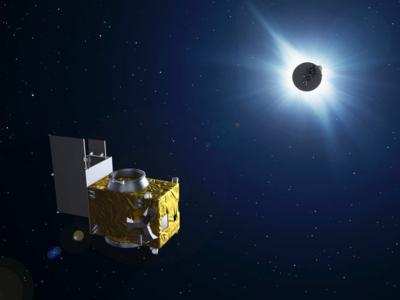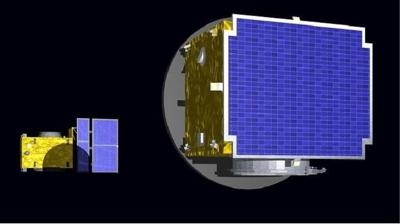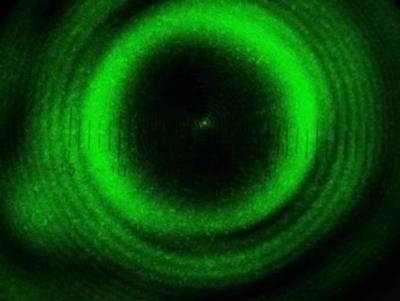Formation-Flying Satellites To Study Solar Eclipses In 2019
Every 18 months or so, scientists and sensation-seekers gather at set points on Earth’s surface, to await awe-inspiring solar eclipses. The Moon briefly blocks the Sun, revealing its mysterious outer atmosphere, the corona. Though what if researchers could induce such eclipses at will?

That’s the scientific vision behind ESA’s double-satellite Proba-3, the world’s first precision formation-flying mission, planned for launch in 2019.
An ‘occulter’ satellite will fly 150 m ahead of a second ‘coronagraph’ satellite, casting a precise shadow to reveal the ghostly tendrils of the solar corona, down to 1.2 solar radii, for hours on end. “We have two scientific instruments aboard,” explains Damien Galano, Proba-3 Payload Manager. “The primary payload is ASPIICS, a coronagraph to observe the corona in visible light while the DARA radiometer on the occulter measures the total solar irradiance coming from the Sun – a scientific parameter about which there is still some uncertainty.
“The corona is a million times fainter than the Sun itself, so the light from the solar disk needs to be blocked in order to see it. The coronagraph idea was conceived by astronomer Bernard Lyot in the 1930s – and since then has been developed and has been incorporated into both Earth-based and space telescopes.
“But because of the wave nature of light, even within the cone of shadow cast by the occulter, some light still spills around the occulter edges, a phenomenon called ‘diffraction’. To minimize this unwanted light, the coronagraph can be positioned closer to the occulter – and therefore deeper into the shadow cone. However the deeper it is, the more the solar corona will also be occulted by the occulter.

“Hence the advantage of a larger occulter and the maximum possible distance between the occulter and the coronagraph. Obviously a 150-m-long satellite is not a practical proposition, but our formation flying approach should provide us with equivalent performance. Furthermore, the ASPIICS coronagraph itself contains a smaller, secondary occulter disk, to cut down on diffracted light still further. Precision is all – the aperture of the ASPIICS instrument measures 50 mm in diameter, and for corona observation performance it should remain as much as possible in the centre of the shadow, which is about 70 mm across at 150 m. So we’ll need to achieve millimeter-scale positioning control between the two spacecraft, effectively forming a single giant instrument across space.”
ASPIICS (Association of Spacecraft for Polarimetry and Imaging of the Corona of the Sun) is being developed for ESA by a consortium led by Centre Spatial de Liège in Belgium, made up of 15 companies and institutes from five ESA Member States.
“Many of these companies are new to ESA, and they’ve proved to be very motivated and eager to show their capabilities,” remarks Damien. “We’ve produced various prototypes of instrument elements, and our first complete ‘structural and thermal model’ should be complete in the autumn, ahead of our end-of-year Critical Design Review.
“We’re also looking into various optical aspects, such as the best occulter edge shape to minimise diffraction.”

There’s a lot of broader interest in this external occulter approach – especially for the imaging of Earth-like exoplanets, which would require the blocking out of their parent stars. It’s a similar challenge, the main difference being that the star in question is a point source of light rather than the extended source that our Sun is.
“So it could be that formation-flown external occulters become versatile scientific tools, opening many new vistas in astronomy.”
(Images provided with ESA news release)
 Airbus Racer Helicopter Demonstrator First Flight Part of Clean Sky 2 Initiative
Airbus Racer Helicopter Demonstrator First Flight Part of Clean Sky 2 Initiative Diamond's Electric DA40 Finds Fans at Dübendorf
Diamond's Electric DA40 Finds Fans at Dübendorf ANN's Daily Aero-Term (04.23.24): Line Up And Wait (LUAW)
ANN's Daily Aero-Term (04.23.24): Line Up And Wait (LUAW) NTSB Final Report: Extra Flugzeugbau GMBH EA300/L
NTSB Final Report: Extra Flugzeugbau GMBH EA300/L Classic Aero-TV: 'Never Give Up' - Advice From Two of FedEx's Female Captains
Classic Aero-TV: 'Never Give Up' - Advice From Two of FedEx's Female Captains





